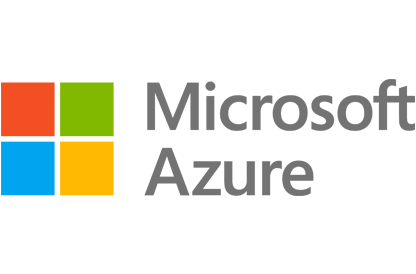What is Observability in IT Operations?

Overview

Observability for enterprise systems is delivered when operators, developers, and system reliability engineers (SRE) can quickly comprehend and react to changes in IT system performance. Relying on a deep understanding of communications between applications and microservices, it enables engineers and administrators to immediately find faults and slowdowns without the high-cost, labor-intensive war rooms that plague large organizations. The speed you gain is especially helpful when complex applications span public clouds, owned data centers, and third-party processors—making it harder to identify the root cause of service degradations.
Advanced observability differs from traditional monitoring in one key way: Advanced observability not only gathers metric data prevalent in monitoring but also captures transaction flow and timings, coupling them with correlated events and logs to provide actionable insights. These insights provide a more comprehensive understanding of system/application behavior and help to identify issues that would otherwise be difficult to detect.
Observability is not a new term. Coined in 1960 in conjunction with control theory, observability has now moved into other disciplines, including IT. Because of the complexity of hybrid cloud, “cloud observability” has also become a popular term.
Observability
What is the difference between monitoring and observability?
Observability is often confused with monitoring, but the two are quite different.
Monitoring refers to observing a system’s performance over time. Monitoring tools typically collect performance data from specific sources, such as log files or performance counters. For example, monitoring can tell you how many users are on the system, but it does not proactively tell you when you’re reaching a capacity limit. Monitoring is a reactive approach that requires you to know what’s important to monitor in advance. One of its limitations is that it’s focused on capturing metrics at a specific point in time.
Observability serves a broader function than monitoring. Observability tools gather data from all available sources, such as logs, performance counters, and application code. Then they analyze that data to gain visibility into the inner workings of a system and understand its behavior. This data can be used to detect issues before they cause problems by identifying trends and providing insights into how the system can be improved.
Observability is an outcome of broad monitoring and transaction-level analysis, much like sight is an outcome of your eyes and your brain’s visual processing. OpenText™ observability solutions, when coupled with the OpenText AIOps platform, can deliver both the observability insights and the broad event, system management, and remediation capabilities required to maintain complex IT services.
What are the important data types for observability?
There are two schools of thought for observability solutions:
- MELT. This acronym identifies the types of data collected as part of observability.
- Metrics: This is classic monitoring—measurements of activities over time from microsecond network response times to complete synthetic transactions.
- Events: The system-generated events occurring during the measurement period.
- Logs: Unstructured data that provides insights to system activities.
- Traces: A recorded visual representation of the entire journey of a request as it moves through the nodes of a distributed system providing a timing breakdown with context about the connection between services.
- Golden signals. Popularized by Google as part of their SRE manual, golden signals represent a more performance-centric approach to solving problems.
- Latency: The amount of time it takes your application to service a request.
- Traffic: The number of requests your system receives.
- Errors: The rate of requests that fail.
- Saturation: The status of capacity within your service.
Note that there are significant similarities in the data collected, but they are described differently based on context (type vs performance). Whether you’re using MELT or golden signals, the key is to focus on anomalous results to detect problems and identify where they occur. In the next section, titled How does OpenTelemetry help with observability?, you can learn more about how OpenTelemetry uses this data to deliver extraordinary observability.
How does OpenTelemetry help with observability?
OpenTelemetry is an open-sourced project managed by the Cloud Native Computing Foundation. It provides a vendor-neutral instrumentation protocol for collecting telemetry data, including metrics, traces, and logs. The protocol works across all programming languages and platforms, allowing you to analyze all data in a single view. This standardized approach streamlines instrumentation while defining and correlating telemetry data. OpenTelemetry’s key advantage is its portability, which lets developers and central IT select the toolsets best suited for their roles.
Observability and IT Operations
IT Operations typically monitors their data centers to maintain service uptime and performance. When issues unrelated to hardware or software failures arise, IT Operations opens tickets for developers to research the underlying issues using observability tools. Developers often perform complex queries in Promotheus, creating data streams for analysis and accessing logs to investigate failures.
With the advent of OpenTelemetry, IT Operations teams can simplify data collection and analysis with traces that include correlated metrics and logs. The OpenTelemetry protocol’s correlation capabilities eliminate the need for operators to use complex programming languages like PromQL or perform log queries to initiate and understand observability data.
Instead, they can access correlated data with point-and-click ease. While operators may not suggest code updates, they can identify performance bottlenecks and route tickets directly to the responsible party—whether that’s an internal developer or a third-party vendor experiencing slowdowns in their application.
What are the benefits of observability?
Organizations can gain complete IT observability through these key benefits:
- Improved quality: The more you observe, the more critical issues you can find—leading to better products that meet stakeholder and customer expectations.
- Increased efficiency: Through observability, companies can quickly debug systems and software.
- Reduced costs: Extended debugging periods cost a lot of time and money, which observability can reduce in the long run.
- Faster time to market: With observability in place, you can deliver IT services such as new/updated applications on schedule.
- Application performance monitoring: Comprehensive observability allows organizations to diagnose critical software issues immediately and improve performance metrics.
- Helpful business analytics: With observability being a data-heavy process, you can learn more about key performance indicators (KPIs), such as return on investment (ROI) and your bottom line.
- Exceptional user experience: Detecting issues before they become problematic leads to an exceptional user experience, which can improve an organization’s reputation and profitability.
- Infrastructure, cloud, and Kubernetes monitoring: Observability can help detect software issues across infrastructure and operations (I&O) teams, Kubernetes environments, and the cloud. The result is enhanced coverage of all the components that make a successful application.
- Improved root cause analysis: The combination of metrics, logs, and traces enables faster, more accurate root cause analysis. Teams can quickly correlate data across different systems and services to identify the source of issues.
- Enhanced collaboration: Observability creates a shared understanding of system behavior across development, operations, and business teams. This common ground improves communication and speeds up problem resolution.
- Predictive issue resolution: With comprehensive observability data and advanced analytics, organizations can identify potential issues before they impact users. This proactive approach reduces downtime and improves service reliability.
- Scalability management: Observability provides crucial insights for managing system scalability, helping organizations optimize resources and plan for growth effectively.
When implemented correctly, observability can be a powerful tool for gaining complete IT visibility—which translates to positive impacts on an organization’s IT performance quality, efficiency, time to market, and profitability.
How does AIOps work with observability?
AIOps enhances observability by translating insights into action. For example, while observability helps developers understand how specific code segments affect application behavior, AIOps enables operations teams to respond automatically to outages and slowdowns with minimal effort. Together, these tools give teams maximum visibility and a deep understanding of issues and their impacts.
This combination is essential for smooth operations, especially if you have cross-functional teams and a highly distributed computing environment. AIOPs plus observability enhances critical daily IT operations, including:
- Accurate debugging: Use data from events, metrics, logs, traces, and other available sources to quickly identify and resolve issues.
- Proactive detection: Detect issues before they cause problems by using visual and algorithmic-based trends to identify potential issues.
- Cost-effective maintenance: Give application owners and central IT teams the ability to monitor systems across the enterprise for broad insights into software and hardware faults and performance without relying on expensive developer or SRE resources.
- Improved efficiency: Gain insights into how you can improve a system and make changes accordingly.
- Broader coverage of multiple cloud-native architectures: Employ a third-party tool to achieve a holistic view across multiple cloud-native architectures rather than relying on public cloud vendor performance tools.
- GenAI-based IT Operations acceleration: Enable both experienced and new operators to quickly understand and fix detected issues with event-driven remediation suggestions and intelligent documentation querying based on GenAI.
- Integrated remediation: Deliver automated or user-implemented remediation with a strong AIOps platform to drive efficient and effective operations.
AIOps and observability have broad-reaching applications—from optimizing web transactions to ensuring that IT performance meets customer expectations. Here’s a use case that highlights their value:
Let’s say you're a developer trying to identify the cause of a system crash. With monitoring, you would have to make sure all relevant systems had been monitored, manually collect data from them, and then try to piece together what happened. This process would be difficult and time consuming because your data would be from after the crash occurred.
With AIOps and observability, you have automatic access to data from all available sources, including correlated metrics, logs, and traces. You also have access to GenAI remediation recommendations from both public and private documentation and automated remediation. Most importantly, you have the help of analytics to find anomalies that could point you to the problem before it crashes the system.
Observability tools and costs
Cost is a key drawback of observability tools. One recent survey found nearly all respondents (98%) have experienced overages or unexpected spikes in costs at least a few times a year, with 51% seeing overages or unexpected spikes in spending at least monthly.
These spikes are primarily due to the ingestion costs charged by vendors of observability tools that can pull in vast amounts of data related to application transactions. These costs have two outcomes:
- An incomplete set of applications that use observability (only those rated critical to corporate functioning).
- No extension of observability tools beyond SREs and developers.
In both cases, the advent of OpenTelemetry and more cost-effective pricing provided by vendors such as OpenText can extend monitoring across all IT services and allow IT Operations to access the tools.
What are the best practices for observability?
To maximize the value of observability in your organization, consider these essential best practices:
Start with clear objectives
- Define specific goals for your observability implementation.
- Identify critical systems and services that require detailed monitoring.
- Establish baseline metrics for normal system behavior.
Define meaningful metrics
- Focus on metrics that directly impact business outcomes.
- Implement the USE method (Utilization, Saturation, Errors).
- Create custom metrics for business-specific processes.
Set up proper instrumentation
- Implement automated instrumentation where possible.
- Ensure consistent tagging and labeling across systems.
- Balance data granularity with storage and performance costs.
Create effective dashboards
- Design dashboards that tell a clear story about system health.
- Include both high-level overviews and detailed drill-down capabilities.
- Customize views for different stakeholder needs.
OpenText observability solutions
OpenText provides comprehensive observability solutions designed to address the complex needs of modern IT environments. Our integrated approach ensures complete visibility across your entire IT estate:
Cloud observability OpenText's cloud observability solutions provide deep insights into cloud-native applications and infrastructure across multiple cloud providers. These solutions enable organizations to monitor cloud resource utilization, costs, and performance while ensuring optimal service delivery. Teams can quickly identify and resolve issues specific to cloud environments, such as misconfigured services or resource constraints.
Application observability Our application observability capabilities deliver detailed insights into application performance, user experience, and business transactions. This solution helps development and operations teams understand application behavior, track user journeys, and optimize application performance. It includes features for real-time monitoring, code-level diagnostics, and user experience analytics.
What’s new in OpenText Application Observability?
Infrastructure observability OpenText's infrastructure observability solution provides comprehensive monitoring and analysis of your entire IT infrastructure, including servers, storage, and virtualized environments. This solution enables teams to track resource utilization, capacity trends, and infrastructure health across hybrid environments, ensuring optimal performance and resource allocation.
What's new in OpenText Infrastructure Observability?
Network observability Our network observability solutions offer end-to-end visibility into network performance, traffic patterns, and connectivity issues. It helps organizations maintain optimal network performance, identify potential security threats, and ensure reliable service delivery. The solution includes advanced analytics for network troubleshooting, capacity planning, and performance optimization.
The bottom line on observability: Better visibility into your IT estate
Observability is an important element in understanding the entire state of your entire infrastructure. The influx of tools that were implemented with good intentions has left a mess of your IT estate, causing your systems to be more complex than they’ve ever been.
This complexity severely hampers system troubleshooting and management. More tools lead to more problems, especially when frequently used tools stop working—making issues even harder to find and fix.
Effective observability tools provide a proactive remediation approach to help uncover problems faster.





